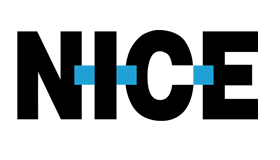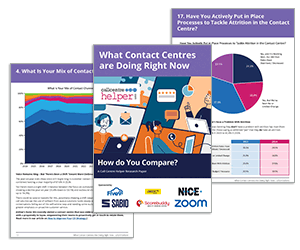Yael Stanger Sonsino at NICE explores how AI can help overwhelmed contact centre supervisors overcome burnout, streamline decision-making, and reclaim their role as strategic team leaders.
Rising customer expectations, a heavily digital environment, AI-powered applications, and hybrid and multinational workforces present increasingly complicated challenges for contact centre supervisors.
Our recent study confirmed this assessment, with 69% of supervisors surveyed reporting that their work complexity has increased, 81% reporting a heavier workload, and 62% saying that work-related stress is higher than in the past.
That’s a formula for burnout.
When most contact centre leaders think about burnout, they naturally focus on declining motivation among frontline agents. But supervisors are equally at risk – and the financial impact of their disengagement is massive.
Supervisors Are Drowning in Data and Short on Time
Supervisors are the gatekeepers of quality in the contact centre, keeping agents they supervise consistently aligned with their company’s larger strategic goals.
They oversee omnichannel customer interactions, identify optimization opportunities, promote team performance, reward successes and drive key business outcomes.
Whether mentoring agents, analyzing data, reporting to the C-suite or making key operational decisions, supervisors often have the most direct influence on the contact centre.
So, when supervisors struggle, the entire organization suffers, leading to disengaged employees, declining customer satisfaction and operational inefficiencies that drain revenue.
The causes of supervisor burnout in the modern contact centre can be boiled down to two basic elements: too much information and not enough time.
The sheer volume of data – across voice, chat, email and social channels, as well as workforce management solutions – makes it hard to pinpoint trouble spots and prioritize activities.
Adding to the complexity is the common problem of supervisors using a long list of siloed tools for their everyday tasks. They might spend hours manually scanning dashboards, reports and live monitoring grids to identify issues that need attention.
With their focus taken up by sifting through data and the routine operational aspects of their job, supervisors are forced to be more reactive than proactive. Much of their time is spent putting out fires, with too little time and too few resources available for diving into the broader CX picture.
Yet, even when they do have the opportunity, supervisors are often faced with limited visibility. They might be relying on outdated analytical tools or static periodic reports, without the ability to provide real-time assistance and or gain value from rapid analysis.
In addition, their in-house reporting tools tend to be expensive, heavily manual, frequently dependent on workarounds, and time-consuming.
Even the flood of generic AI tools available today for integration into contact centre workflows don’t solve the problem. On the one hand, they provide more data and stats from across the organization, new kinds of automation, and a higher level of analysis.
On the other hand, the amount of information collated can be simply overwhelming and a constant AI-driven macrolevel perspective can create a disconnect with frontline agents and their personal KPIs.
What Is the Cost of Supervisor Burnout?
Due to the challenges they face, supervisors may have to make rapid decisions based on incomplete or undifferentiated data.
This can lead to more error-prone decision-making, delayed interventions, and reactive management styles. Feedback given to agents is then late in coming and often out of touch, while 53% of contact centre agents say they need even more real-time assistance from their supervisors.
Moreover, the time supervisors need to spend manually crunching numbers or creating reports means less time spent on developing and engaging agents.
And variance across the tools available and the ability to accurately identify problem areas leads to inconsistent coaching strategies and outcomes.
Frustrated supervisors feeling cognitive overload due to these kinds of day-to-day challenges are more likely to disengage from their teams on the way to burnout.
The results are reduced efficiency, higher agent attrition, lower team morale and decreased customer satisfaction – all of which have business consequences that impact the bottom line.
How AI Helps Supervisors Regain Control
Research indicates that half of contact centre leaders believe integrating AI reduces workloads for their employees.
The good news is that AI can do much more than that. It has become a game-changer for reducing burnout, enhancing decision-making and empowering supervisors to focus on the unique value they bring to the table: coaching, strategy and team engagement.
Effectively integrated AI can transform the way supervisors work, reducing operational bottlenecks, streamlining administrative tasks and automating performance insights. Supervisors can once again focus on people – not just problems – and be effective strategic players in their organization.
The Future of Leadership in Contact Centres
The role of the contact centre supervisor is evolving. AI-powered leaders are shifting their focus from workflow efficiency optimizations – as the technology is now available to handle much of that independently – to team empowerment, clarity and strategic impact.
By embracing AI-augmentation, supervisors can:
- Reduce stress and burnout.
- Improve agent engagement and coaching effectiveness.
- Deliver better customer experiences without the guesswork.
This blog post has been re-published by kind permission of NICE – View the Original Article
For more information about NICE - visit the NICE Website
Call Centre Helper is not responsible for the content of these guest blog posts. The opinions expressed in this article are those of the author, and do not necessarily reflect those of Call Centre Helper.
Author: NICE
Reviewed by: Rachael Trickey
Published On: 25th Apr 2025
Read more about - Guest Blogs, NICE






 NICE is a leading global enterprise software provider that enables organizations to improve customer experience and business results, ensure compliance and fight financial crime. Their mission is to help customers build and strengthen their reputation by uncovering customer insight, predicting human intent and taking the right action to improve their business.
NICE is a leading global enterprise software provider that enables organizations to improve customer experience and business results, ensure compliance and fight financial crime. Their mission is to help customers build and strengthen their reputation by uncovering customer insight, predicting human intent and taking the right action to improve their business. 































